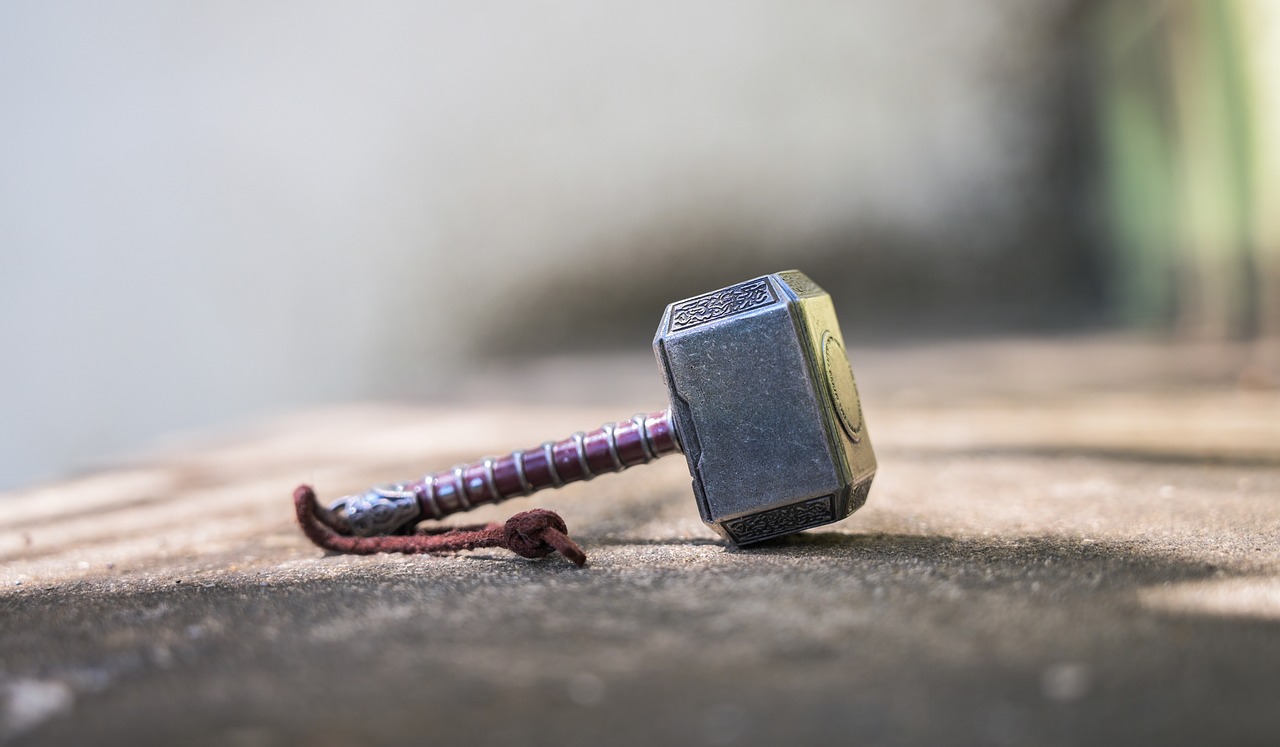Thor’s Hammer: A Multifaceted Symbol in Norse Culture
One of the most significant symbols in Norse mythology is Thor’s Hammer, known as Mjöllnir (pronounced “MIOL-neer”). Thor, the tireless protector of Asgard, was tasked with defending the celestial realm of the Aesir from the chaotic giants striving to disrupt their existence. The hammer he wielded was not merely a tool of warfare; it possessed the extraordinary ability to return to Thor’s hand after being thrown, resembling a boomerang.
Named after the Proto-Germanic word meaning “Thunder,” Thor embodied the forces of storms, and the sound of thunder was understood as his hammer striking against foes. The Old Norse term Mjöllnir likely translates to “Lightning,” evidencing its close ties with thunder and storm-related connotations. While the exact origins of the term are debated, scholars often trace its roots back to terms in Old Slavic, Russian, and Welsh, all sharing meanings associated with lightning. Additionally, connections to Icelandic words for “snow” and “white” further enrich the symbolism surrounding the hammer, hinting at themes of purity and illumination.
Ritual Significance of Thor’s Hammer
Though Thor’s hammer served as a potent weapon for the Aesir, its significance extended far beyond combat. It played an essential role in various rituals, particularly those of consecration and protection. The hammer was employed in ceremonies to bless marriages, births, and possibly funerals. A tale from Snorri Sturluson’s Prose Edda illustrates this: after killing and consuming his goats, Thor resurrected them using his hammer on their bones — a demonstration of its life-affirming power. Furthermore, historical records indicate that large hammers were housed in temples dedicated to Thor, where rituals resembling thunder were performed, possibly to safeguard the community.
Historian Hilda Roderick Ellis Davidson summarizes this multifaceted nature of the hammer: it represented not only destructive storm powers but also acted as a protective force against malevolence, underpinning communal well-being. The hammer’s presence was vital during significant life events such as birth, marriage, and death, marking its role in both protecting and sanctifying life’s transitions.
A critical aspect of its ceremonial use is its role in blessing marriages. The story of Thor’s transvestite adventure to reclaim his stolen hammer showcases its essentiality in marital contexts. A Bronze Age rock carving suggests the longstanding tradition of hammer blessings, further corroborating Thor’s connection to fertility and bountiful harvests.
The Cosmic Order and Thor’s Hammer
In the grand tapestry of Norse mythology, the cosmos (innangard) stood in contrast to chaos (utangard). Asgard, the realm of gods, and Midgard, the realm of humans, were fortified against the chaotic influences of the giants’ world, known as Jotunheim or Utgard. By consecrating something with Mjöllnir, individuals were symbolically transitioning from chaos into a sacred space, receiving divine protection and contributing to a social order that banished the profane.
Through both its weaponized might and its sacramental uses, Thor’s hammer embodied the duality of destruction and protection, playing a vital role in the continuity of both the cosmos and human society.
The Creation of Mjöllnir
The origins of Mjöllnir are illustrated in a myth where Loki, the cunning trickster, severed the golden hair of Thor’s wife, Sif. In order to appease Thor, Loki journeyed to the dwarves of Svartalfheim to acquire an even more magnificent head of hair. During this quest, he also cleverly challenged the dwarves to display their smithing talent, resulting in several treasures for the gods, including the famed hammer. A flaw in its design — namely, a short handle — occurred when Loki, in the form of a fly, distracted the dwarf forging it. Nevertheless, Thor accepted the hammer as his weapon despite its imperfection.
Thor’s Hammer in the Viking Age
In the Viking Age, hammer amulets became popular, paralleling the Christian tradition of cross amulets as symbols of faith. These items may have initially emerged as a counterpoint to Christian beliefs, representing the traditional Norse values of protection and blessing associated with Thor. Archaeological findings, including soapstone molds in Denmark and Sweden, reveal that both cross and hammer pendants coexisted, indicating a blending of beliefs and practices during this time. For many, the worship of Thor was not only a declaration of allegiance to ancestral deities but also an expression of identity amidst changing religious landscapes.
The choice of Thor’s hammer over other symbols — like the spear of Odin or the ship of Freyr — signifies Thor’s deep-rooted significance among the populace of the Viking Age. Individuals often adorned themselves with both hammer and cross jewelry, hinting at a fluidity in religious identity during this pivotal historical period.
For further insights into Norse mythology, books like “The Viking Spirit” provide comprehensive introductions to the subject, alongside curated lists of essential literature to explore the intricacies of this fascinating belief system.



